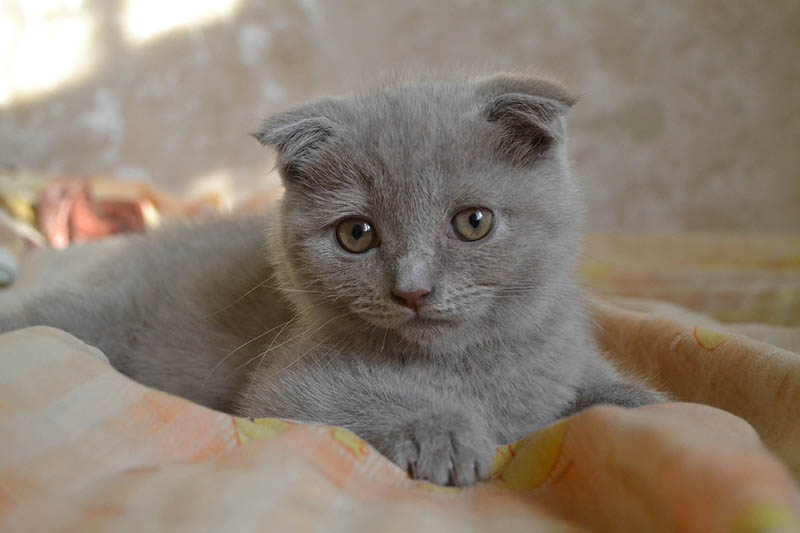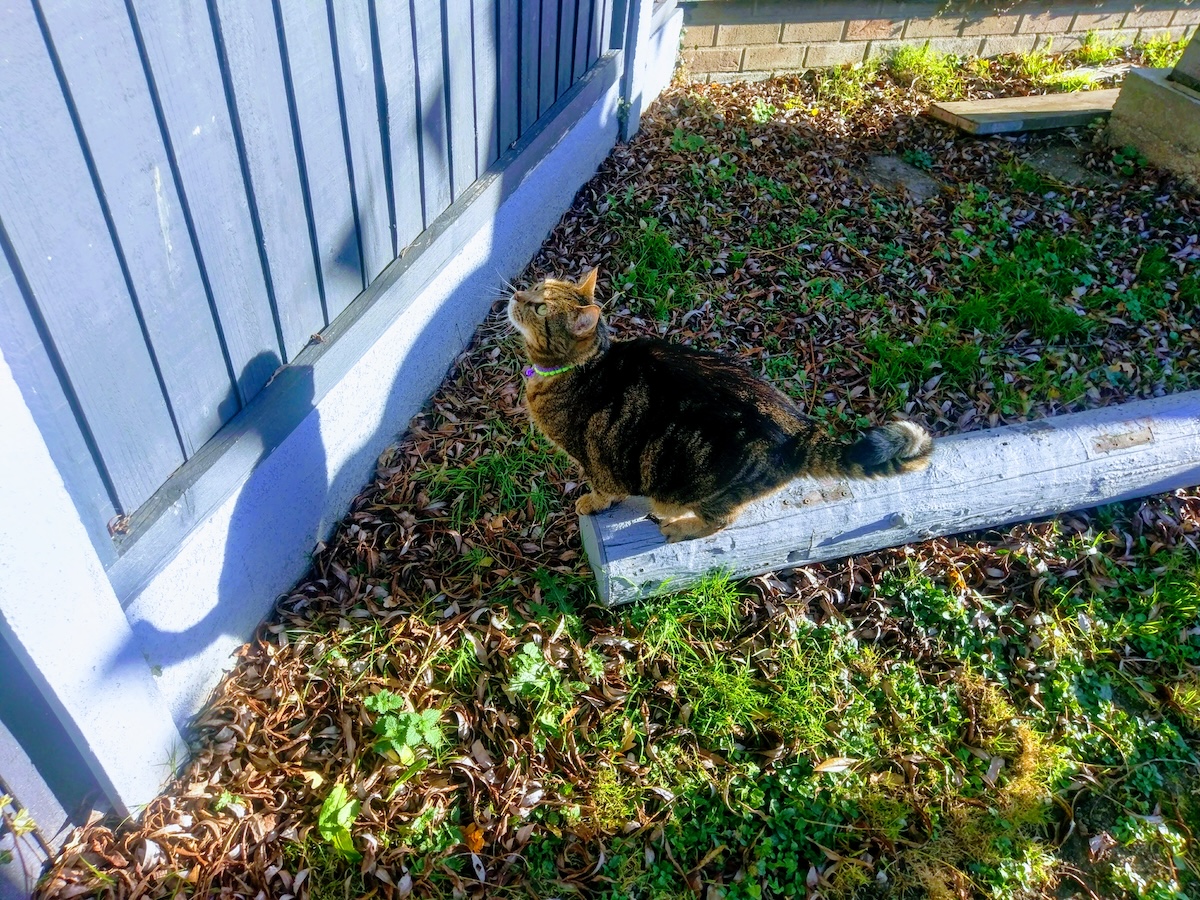Scottish Folds are fun-loving, playful cats that love spending time around humans. They can be longhaired or shorthaired and display various colors, ranging from black and white to cream and gray, which is often referred to as blue. Gray Scottish Folds are not a separate breed but simply a variation in color within the breed.
Scottish Folds are famous for their folded ears and cute appearance, which is why many love to have them as pets. But how did these lovely cats come to be? And what made them so popular? You can keep reading to learn more about the gray Scottish Fold’s origins and history.
The Earliest Records of the Gray Scottish Fold in History
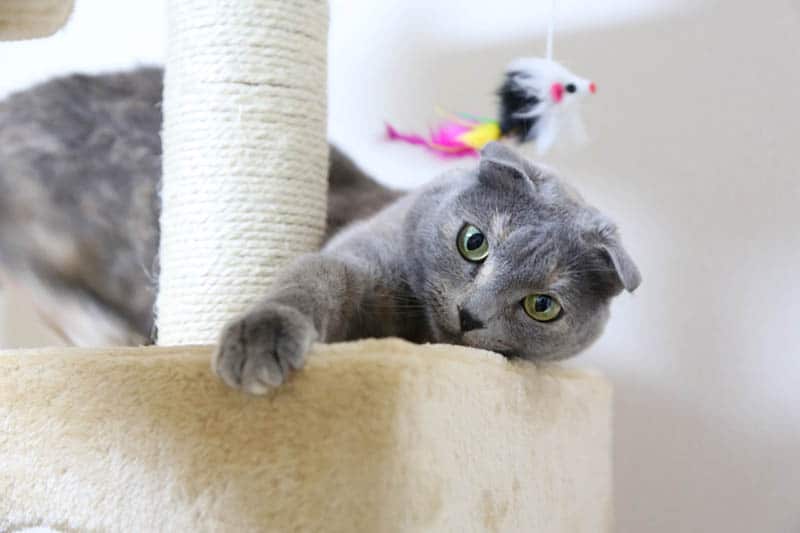
Scottish Folds have been around for quite some time, beginning with a barn cat called Susie. The cat was found in Scotland in 1961, and people were amazed by her slightly folded ears, which was uncommon for cats at the time.
She gave birth to kittens with the same genetic mutation, and their ears were also folded. The kittens caught the attention of a local farmer, William Ross. He registered the breed in the UK in 1966 when it was formally recognized by the Governing Council of the Cat Fancy (GCCF).
After the recognition, William began breeding Scottish Folds, and they soon became popular worldwide. During the first 3 years, William bred 72 kittens, but only 42 had folded ears. The GCCF withdrew its registrations in 1971 because the breed wasn’t allowed to be shown in Europe due to the health concerns it carried.
Many Scottish Folds had issues with their genes, causing limb deformities and issues with their ears and tails, which is why Europe didn’t accept the breed. However, the Scottish Fold was exported to the USA around the 1970s, where breeders continued to produce new cats, pairing the Scottish Folds with other breeds, such as American Shorthairs and British Shorthairs.
How the Gray Scottish Fold Gained Popularity
The gray Scottish Folds gained instant popularity because of their interesting appearance. Their first popularity rise was in Europe in 1966, but it significantly decreased after the GCCF withdrew the registration of this breed in 1997 due to an array of health problems.
However, while their popularity in Europe decreased, it rose in the USA. The Scottish Fold came to America around the 1970s, and they’ve been famous ever since. They’re much more common in the USA, and you’ll rarely see them in Europe.
Formal Recognition of the Gray Scottish Fold
The first formal recognition of the gray Scottish Fold was in 1966 when the Governing Council of the Cat Fancy (GCCF) recognized them. They withdrew their registration in 1971, but the breed had already been exported to the USA.
In the US, the Scottish Fold gained formal recognition in 1973 from the Cat Fanciers’ Association (CFA) and even gained championship status in 1978. The Scottish Folds with long fur were recognized in the mid-1980s and gained championship status in 1993.
The breed is also accepted by The International Cat Association (TICA) and the American Cat Fanciers Association (ACFA).
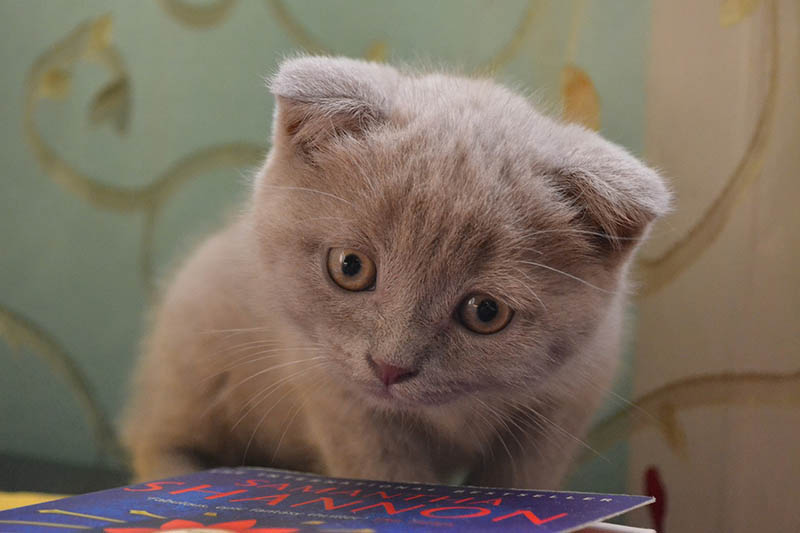
Top 3 Unique Facts About Gray Scottish Folds
Scottish Folds are truly unique, and they have unique characteristics that set them apart from other cats. Below are some interesting facts about the Scottish Fold.
1. Scottish Folds Have Folded Ears Due to a Genetic Mutation
While many believe that all Scottish Folds have folded ears, that’s not the case. Some have a genetic mutation that results in cute, folded ears, but others do not. However, while their folded ears make Scottish Folds stand out, they’re vulnerable to a few health problems, which is something to keep in mind if you want to adopt one.
2. These Cats Are Born with Straight Ears That Fold Over Time
Many assume that Scottish Folds are born with folded ears. However, they’re born with straight ears that fold over time. Some Scottish Folds don’t have the genetic mutation and may grow old with straight ears.
3. These Cats Were First Called Lop-Eared Cats Instead of Scottish Folds
Scottish Folds were primarily known as “lop-eared” cats. However, after some time, they gained their current name, which represents a combination of their origin and their most intriguing trait—their folded ears.
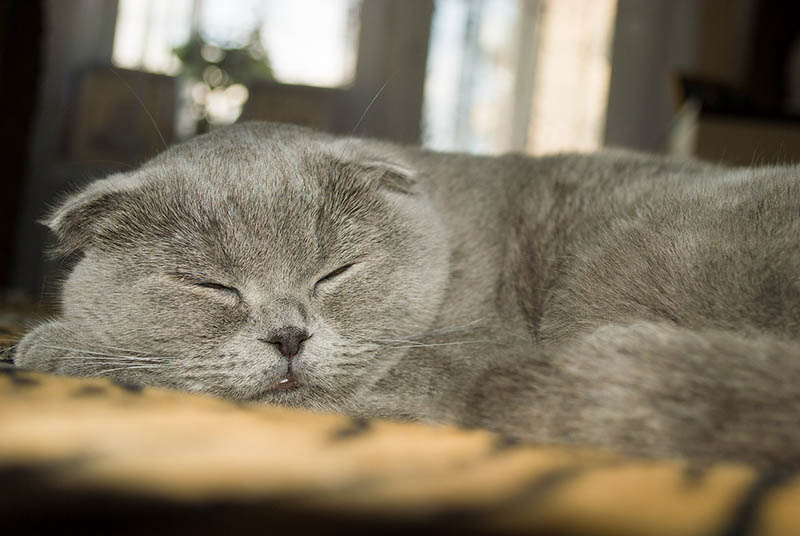
Does the Gray Scottish Fold Make a Good Pet?
The gray Scottish Fold is an excellent pet for families with kids. They’re playful, energetic, and social, and they love spending the day around their owners. They are affectionate around their family and strangers, which is why it’s better to keep them indoors. Gray Scottish Folds get along with other pets quite well, so you don’t have much to worry about if you already have other pets.
They’re easy to care for since they’re typically low-maintenance pets. If you provide your gray Scottish Fold with the proper care and love, they will be a loyal companion for several years.
Conclusion
Gray Scottish Folds are beautiful cats that have been around for ages, and they are universally loved for their unique looks. There is certainly controversy surrounding the breeding of Scottish Folds due to their health issues, and that’s something to keep in mind before bringing one home. However, they make exceptional pets, and you’re unlikely to find a friendlier feline.
See also:
Featured Image Credit: Natakay, Pixabay
Contents
- The Earliest Records of the Gray Scottish Fold in History
- How the Gray Scottish Fold Gained Popularity
- Formal Recognition of the Gray Scottish Fold
- Top 3 Unique Facts About Gray Scottish Folds
- 1. Scottish Folds Have Folded Ears Due to a Genetic Mutation
- 2. These Cats Are Born with Straight Ears That Fold Over Time
- 3. These Cats Were First Called Lop-Eared Cats Instead of Scottish Folds
- Does the Gray Scottish Fold Make a Good Pet?
- Conclusion

